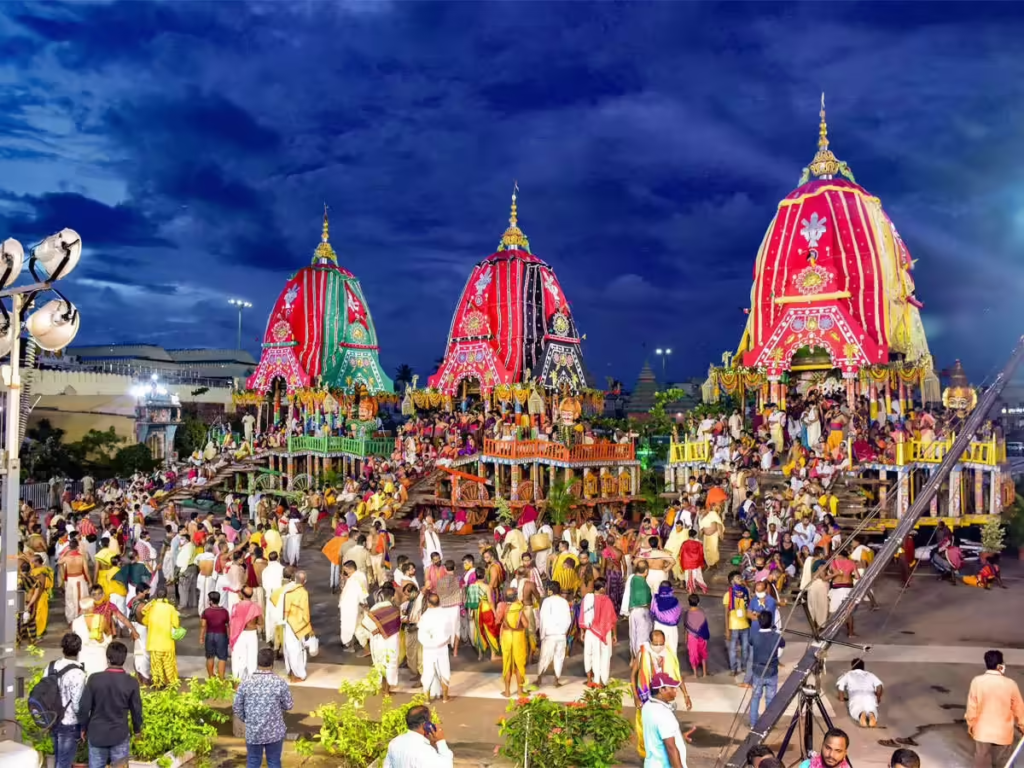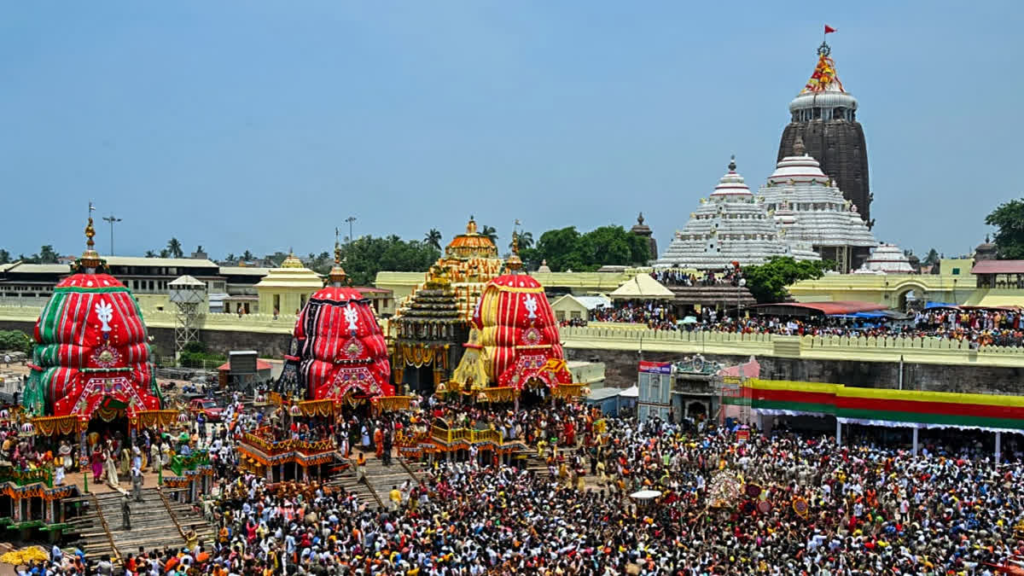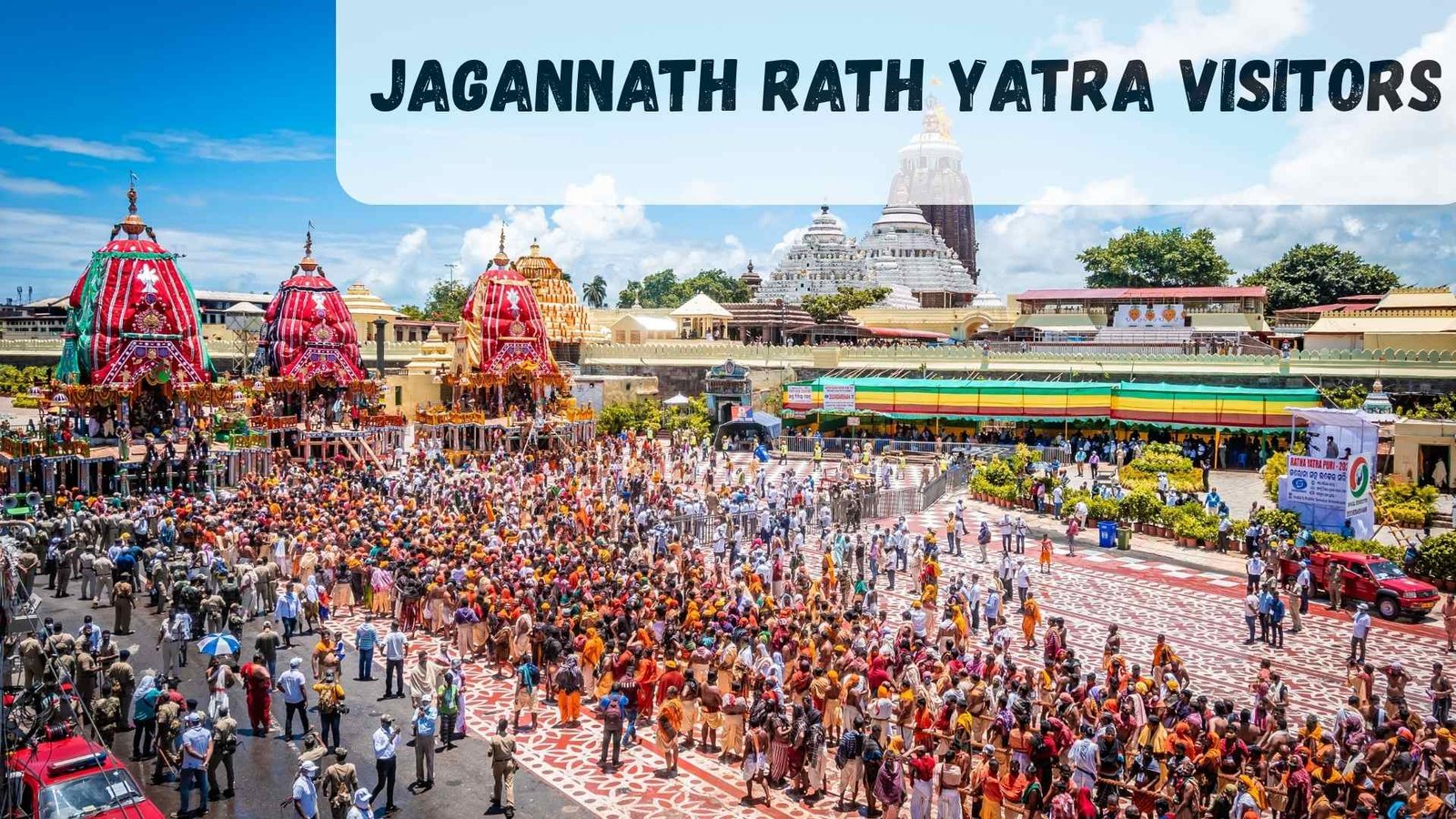The Jagannath Rath Yatra is not just a festival; it’s a living, breathing spectacle of faith that engulfs the holy city of Puri. Millions of devotees converge to witness Lord Jagannath, Lord Balabhadra, and Devi Subhadra embark on their grand chariot journey. For first-time Jagannath Rath Yatra Visitors, the sheer scale and spiritual intensity can be overwhelming. To ensure a safe, comfortable, and spiritually fulfilling experience, it’s crucial to be well-prepared.
This comprehensive guide outlines the essential Do’s and Don’ts for Jagannath Rath Yatra Visitors, offering practical advice on everything from safety and attire to crowd behavior and what to carry, ensuring you have the best way to attend Rath Yatra.
Do’s for Jagannath Rath Yatra Visitors: Embrace the Experience Safely
Follow essential practices to enjoy the festival respectfully and comfortably. Dress modestly, carry water and ID, arrive early to avoid the rush, and stay attentive to announcements. These do’s help you experience the divine procession with peace of mind and security.
- Do Plan and Book in Advance:
- Accommodation: Hotels fill up months ahead, especially for Rath Yatra season. Secure your stay well in advance.
- Travel: Book your flights or train tickets to Puri or Bhubaneswar early to avoid last-minute surges and unavailability.
- Tour Packages: Consider reputable tour packages for a hassle-free experience, often including transport and accommodation.
- Do Arrive Early and Be Patient:
- Reach Puri at least 1-2 days before the main Rath Yatra day (e.g., June 27, 2025, was the main Yatra day). This allows you to settle, acclimatize, and understand the local dynamics.
- On Yatra day, arrive at your chosen viewing spot hours before the procession begins. Patience is paramount amidst the massive crowds.
- Do Dress Appropriately and Comfortably:
- What to wear at Rath Yatra: Opt for modest, light-colored, and loose-fitting cotton clothing. For women, sarees or salwar kameez are ideal. For men, dhotis, kurtas, or full pants are suitable.
- Footwear: Wear comfortable, closed-toe shoes or sturdy sandals that you don’t mind getting dirty, as you’ll be walking extensively through crowded areas.
- Head Covering: Carry a scarf or cap for sun protection and as a sign of respect when entering temples.
- Do Prioritize Hydration and Nutrition:
- Stay Hydrated: Puri in July is hot and humid. Carry sufficient water bottles and ORS (Oral Rehydration Salts). Drink frequently, even if you don’t feel thirsty.
- Eat Wisely: Stick to clean, hygienic, and light food. While Mahaprasad (sanctified food) is a must-try, be cautious with street food from unverified vendors.
- Do Carry Essentials Wisely:
- Minimal Valuables: Carry only essential cash and minimal valuables. Leave expensive jewelry and unnecessary documents at your hotel.
- Essentials Bag: A small, secure backpack or sling bag for water, a hand towel, hand sanitizer, basic medicines (for headaches, digestion, rehydration), a power bank for your phone, and a copy of your ID.
- Emergency Contacts: Keep a list of emergency contacts, hotel details, and important addresses written down, in case your phone battery dies or connectivity is lost.
- Do Follow Instructions and Cooperate:
- Puri Police & Volunteers: Adhere strictly to the guidelines and instructions given by police personnel, volunteers, and temple authorities. They are there for your safety and crowd management.
- Designated Routes: Stick to designated pilgrim routes and parking areas. Roads near the Grand Road are vehicle-free zones.
- Do Stay Connected with Your Group:
- If traveling in a group, decide on clear meeting points beforehand. Connectivity can be an issue in dense crowds. Keep each other in sight.
If you’re visiting Puri and want to stay close to the divine energy of the Rath Yatra, check out hotels in Puri near Jagannath Temple for convenient accommodation options right by the shrine.

Don’ts for Jagannath Rath Yatra Visitors: Avoid Common Pitfalls
Be mindful of actions that could disrupt your visit or others’ safety. Don’t push through crowds, carry large luggage, or attempt to climb the chariots. Avoid alcohol, inappropriate attire, and ignoring local guidelines to ensure a smooth and respectful pilgrimage.
- Don’t Rush or Push in Crowds:
- The desire to get close to the chariots is strong, but pushing can lead to stampede-like situations and injuries. Maintain patience and move with the flow of the crowd.
- Avoid sudden stops or changes in direction that can disrupt the crowd flow.
- Don’t Carry Excessive Luggage:
- During the Yatra, you’ll be on the move in crowded areas. Heavy luggage will be a hindrance and a security risk. Travel light.
- Don’t Ignore Health Warnings or Overexert Yourself:
- If you feel unwell, dizzy, or lightheaded, immediately move to a calmer spot, seek medical attention (first-aid posts are usually available), and hydrate.
- Don’t attempt to pull the chariots or stay in the densest crowds if you have underlying health conditions, are elderly, or are traveling with small children.
- Don’t Engage in Photography or Videography in Restricted Areas:
- Photography and videography are strictly prohibited inside the Jagannath Temple premises. During the Yatra, authorities may also restrict drones and specific camera equipment for security reasons. Respect these rules.
- Don’t Litter or Use Prohibited Items:
- Maintain the sanctity and cleanliness of the holy city. Use designated dustbins.
- Avoid single-use plastics.
- The use of gutkha, pan, tobacco, and consumption of alcohol are strictly prohibited within the temple premises and along the Grand Road.
- Don’t Fall for Scams or Unverified Offers:
- Be wary of touts offering “exclusive” darshan or accommodation deals that seem too good to be true. Stick to official channels and verified tour operators.
- Verify hotel bookings carefully, especially if done online from unofficial sources.
- Don’t Touch Deities or Sacred Structures:
- Maintain a respectful distance from the deities and sacred structures within the temple and on the chariots. Physical contact is generally not permitted.

To better align your plans with the temple rituals and visiting hours, check out Jagannath Temple Darshan timings & rituals for a comprehensive guide.
Rath Yatra Safety Tips and Pilgrim Guide Jagannath Puri: A Summary
The Rath Yatra safety tips boil down to preparation, awareness, and respect. For Jagannath Rath Yatra Visitors, understanding what to wear at Rath Yatra and what to carry are practical steps, but equally important is adopting a mindset of patience and cooperation.
Rath Yatra safety tips:
- Keep your valuables to a minimum.
- Use a money belt or neck pouch.
- Stay hydrated, especially in the midday heat.
- Note down emergency contact numbers.
- If traveling with children or elders, identify meeting points in case you get separated.
- Avoid crowded spots if you feel unwell.
If you’re planning a leisurely visit to Udaipur, don’t miss out on the best places to explore in Udaipur, featuring everything from serene lakes to majestic palaces.
Pilgrim Etiquette: How to Show Respect
When visiting the Jagannath Rath Yatra, it’s important to honor local customs and spiritual practices. Always greet fellow devotees respectfully, avoid taking photos of rituals inside the temple, and remove your footwear before entering sacred spaces.
As a Pilgrim guide Jagannath Puri, here are a few extra pointers:
- Greet fellow devotees with folded hands.
- Do not photograph rituals inside the temple complex.
- Donate thoughtfully to official charity counters rather than street solicitors.
- Remove footwear before entering any sacred spaces.
- Maintain silence during key ceremonies like Chhera Pahara (sweeping ritual).
For detailed travel guidance, refer to How to reach Puri for Rath Yatra to plan your journey efficiently.
Conclusion
Participating in the Jagannath Rath Yatra is a profound act of faith and a truly mesmerizing cultural spectacle. For Jagannath Rath Yatra Visitors, being prepared with the right Do’s and Don’ts is essential for a safe and memorable experience. By respecting the sanctity of the occasion, cooperating with authorities, and being mindful of your surroundings, you can fully immerse yourself in the divine energy and collective devotion that defines this magnificent festival. May your pilgrimage to Puri be blessed and filled with divine grace. Jai Jagannath!
Frequently Asked Questions (FAQs)
1. Can we stay at Puri Jagannath Temple? No, you cannot stay inside the Puri Jagannath Temple itself. However, there are many dharmashalas and guesthouses located very close to the temple complex, offering accommodation primarily for pilgrims.
2. Is 2 days enough for Puri? While you can visit the main Jagannath Temple and Puri Beach in 2 days, it’s quite packed. For a more relaxed trip including nearby attractions like Konark Sun Temple and Chilika Lake, 3-4 days are generally recommended.
3. What is the cost of VIP Darshan in Puri? The cost for VIP Darshan at Jagannath Temple Puri typically ranges around INR 500 per person. This often provides a quicker and more convenient entry with minimal waiting time compared to free general darshan.
4. On which day is Jagannath Temple closed? The Jagannath Temple is notably closed for public darshan for about 14 days in the Hindu month of Ashadha (late June/early July) during the “Anasara” period, after the Snana Purnima ritual and before the Rath Yatra. (For 2025, this was approx. June 13-26).
5. When not to visit Jagannath Puri? While anytime is good for devotees, avoid visiting during the “Anasara” period (mid-June to early July, before Rath Yatra) if your primary goal is to have darshan of the main deities, as the temple remains closed to the public then. Also, expect extreme crowds during the Rath Yatra itself.










